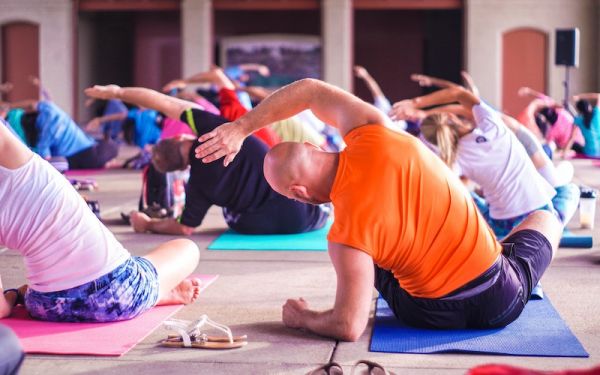
The psychology of behaviour change
As any clinician who wishes to integrate Lifestyle Medicine (LM) into their practice rapidly discovers, simply educating our clients* about the power of diet and lifestyle changes to transform their health and well-being does not translate to them making improvements in their health habits. We must all develop expertise in behaviour change coaching, and that expertise rests on an accurate understanding of why human beings behave the way they do. In a nutshell, all behaviours result from a process of cost-benefit analysis (CBA) that is continuously being run inside the brain, largely by regions such as the basal ganglia which carry out their work beneath the level of conscious awareness1.
No matter how irrational or self-destructive a client’s current diet and lifestyle habits may appear to the clinician (and even to the client themselves), these choices are rational in that they result from a favourable CBA – that is, the perceived benefits of the behaviour outweigh its perceived costs. For a behaviour to change, the CBA of the current behaviour must tip in a less favourable direction (higher cost/lower benefit), and/or the CBA of the healthier alternative must tip in a more favourable direction (lower cost/higher benefit). For example, a smoker will continue to smoke until the perceived costs of smoking (inconvenience, social stigmatising, financial expense, cosmetic and health impacts) outweigh the benefits (relaxation, bonding with smoking peers, avoidance of nicotine withdrawal), and/or the perceived benefits of being a non-smoker outweigh the costs.
However, we cannot help but observe that a) there are striking differences between individuals in their CBA with respect to any given habit that impacts on health and b) new inputs can rapidly (but unpredictably) shift an individual’s CBA on a particular habit in either direction. I vividly recall a client who completely overhauled her habitual way of eating in order to resolve a fairly minor case of acne. Others with serious illnesses that are highly responsive to diet and lifestyle change have refused to make even minor adjustments in their habits. Still others made changes, experienced dramatic health benefits including substantial weight loss, pain relief and remission of illness, and then relapsed into old behaviour patterns and became overweight and ill again.
An understanding of cybernetics and personality neuroscience can help clinicians understand why there is no ‘one size fits all’ approach to behaviour change, and dramatically enhance our ability to help our clients set and achieve effective health improvement goals.
*In preference to the word ‘patient’, a medical term which connotes a hierarchical relationship between a practitioner and the person who consults them, I will use the humanistic term ‘client’ in this article, both to reflect the diversity of professional backgrounds of Lifestyle Medicine practitioners, and to connote the collaborative relationship between practitioner and the person seeking help from them.
Cybernetics
Cybernetics is defined as “the study of principles governing goal-directed, self-regulating, information-processing systems (artificial and living)”2. All organisms, including humans, are cybernetic in that they must be able to regulate themselves in order to pursue their goals – both primary goals (those involved in gene survival, namely securing food and sexual partners) and secondary goals (those that advance our primary goals, such as gaining esteem, affiliation and material resources). Our brains evolved a plethora of complex mechanisms to guide us to set and work towards goals – most of them non-conscious – that further our chances of survival and reproduction
The cybernetic cycle involves 5 stages:
- Goal activation: emergence of a primary concern in that moment, from a field of competitive motivations;
- Action selection: choice of an operator (e.g. motor action, including speech, or cognitive function) with which to pursue the goal;
- Action: using the operator to carry out the action;
- Outcome interpretation: assessing the state of the world after carrying out the action; and
- Goal comparison: comparing the current state to the goal state. If they match (i.e. goal achieved), another primary concern will emerge to guide the system; if they do not, the cycle will begin again with the same goal in place, or the goal may be deemed unattainable and abandoned – either temporarily or permanently.
It’s important to understand that these stages are not discrete and sequential. The tasks that comprise each stage occur in parallel in the human brain, and moreover, the system is always pursuing multiple goals at the same time, some of them mutually contradictory.
Personality
Personality refers to stable patterns of emotion, motivation, cognition, and behaviour that are characteristic of an individual2. Humans have been developing typologies of personality since at least the time of Hippocrates, who is credited with developing the ‘Four Humours’ classification (melancholic, sanguine, choleric and phlegmatic) that Shakespeare heavily drew upon in crafting his distinctive and memorable characters. A plethora of competing systems exist, from DISC to the MBTI to astrology, but the most scientifically validated taxonomy of personality traits is the ‘Big 5’, often known by its acronym, OCEAN3:
- Openness to experience
- Conscientiousness
- Extraversion
- Agreeableness
- Neuroticism (now more usually described as ‘emotional instability’ or ‘negative emotionality’).
Personality traits are highly heritable, and although impacted upon by developmental factors and life events, are remarkably stable throughout a person’s lifetime4. Although they represent broad regularities in behaviour across many situations, personality traits are probabilistic rather than deterministic2. For example, highly conscientious clients are generally more likely to follow through on lifestyle prescriptions, but even an extremely low-conscientious individual may flawlessly execute a behaviour change plan which totally floats their boat, while a high-conscientious individual may occasionally flake out if a competing goal has a more compelling CBA.
Personality results in stable individual differences in the parameters of species-typical evolved cybernetic mechanisms4,5 – that is, although all individuals within a species pursue a particular set of gene survival goals, our personality traits affect our openness to changing our current habits, sources of motivation to change, the kinds of goals that will be most motivating to us, the determination with which we pursue those goals, how we gather and interpret feedback about progress toward our goals, our tendency to relapse and the obstacles most likely to trip us up, and even how satisfied we feel when we achieve our goals. That is, our personality influences the CBA calculations that our brains make with respect to behaviour change.
Openness
Openness is linked to curiosity, imagination, creativity, and innovation. Individuals high in openness experience heightened reward from cognitive exploration. They are likely to use more creative and innovative strategies to pursue their goals, and to interpret the outcome of their actions in more complex and nuanced ways (stages 2 and 4 of the cybernetic cycle). Highly open clients will benefit from behaviour change programs that employ self-directed learning, encourage them to set their own goals and explore multiple ways to achieve them, and incorporate reflection on their learning experiences. Conversely, individuals who are low in openness will require more coaching in goal and action selection, and will be more successful with a structured program which does not overwhelm them with information (particularly if it contradicts their current beliefs) or require them to make too many decisions.
Conscientiousness
Conscientiousness is linked to the ability to prioritise non-immediate goals, follow rules and resist the distraction of short-term goals (stages 1-3 of the cybernetic cycle). After intelligence, conscientiousness is the best predictor of health and longevity because highly conscientious individuals are less likely to engage in risky behaviours and more likely to employ preventive measure. Highly conscientious clients will require little assistance with setting goals and choosing and executing strategies, but may require input from the practitioner at the outcome interpretation stage of the cybernetic cycle since they are likely to define success in extremely narrow terms, resulting in a perception that they’ve ‘failed’ if they don’t meet these self-imposed high standards. Individuals who are low in conscientiousness will benefit from an approach that emphasises ‘environmental engineering’: modifying their home and work environments to make healthy habits the default setting, and removing temptations and distractions that offer immediate gratification to the detriment of long term goals.
Extraversion
Extraversion, which incorporates traits such as drive, the tendency to experience positive emotions like joy, and excitement seeking, is linked to strong emotional and motivational reactivity to rewards, corresponding to stages 1 and 5 of the cybernetic cycle4,6. A highly extraverted client will benefit from a step-wise behaviour change program that incorporates mini-rewards for each sub-goal that is achieved. On the other hand, a client who is low in extraversion may need more coaching to define a goal that is sufficiently motivating to activate them, and will benefit from encouragement to mindfully reflect on the positive impact of each health-promoting change that they make.
Agreeableness
Agreeableness represents the general tendency toward cooperation and altruism. People who are high in agreeableness are empathic, caring, concerned for others, and able to restrain aggression and other disruptive emotions. Agreeableness influences the types of goal that are activated, the strategies selected to pursue them, interpretations of differences in the social world as a result of goal-directed actions, and assessments of error or goal mismatch (stages 1, 2, 4 and 5 of the cybernetic process). Highly agreeable clients will be activated best by prosocial goals and cooperative strategies. If they are successful in their intended goal, but friends or loved ones are disapproving of or distressed by their behaviour change, they are likely to assess this as a goal mismatch and revert to old behaviour patterns. Hence, enrolling family members into their behaviour change process will help them stick at it. Conversely, clients who are low in agreeableness are more likely to enjoy winner-take-all competitions and bets (for example, whoever is the first to skip a buddy workout has to donate to a charity or political party of the winner’s choosing, which the loser despises).
Neuroticism
Neuroticism, or negative emotionality, is linked to emotional responses to punishment (any stimulus that signals that a goal is unattainable) and threats (cues that signal a decrease in the probability of attaining a goal), corresponding to stage 5 of the cybernetic cycle. A client who is high in negative emotionality will be exquisitely sensitive to such stimuli as failure to achieve a goal weight by a predetermined date. Conflicting goal motivations, such as the fear that changing their eating or drinking habits may court social rejection, may cause them to slide into passive avoidance (manifesting as anxiety or depression), and prevent them from even engaging in stage 1 of the cybernetic cycle – goal activation. Such individuals will benefit from group programs that include stress management as a core element and provide social support for behaviour change, and from a strong focus on process orientation rather than outcome-oriented goals. Clients who are very emotionally stable are resilient in the face of failure to achieve goals, and should be encouraged to set ‘stretch goals’.
Assessing personality
The NEO Personality Inventory was developed by Big 5 pioneers Paul Costa and Robert McCrae, and assessment tools can be purchased here. There are also many free online Big 5 personality assessment instruments, including The Big Five Project, IPIP-NEO, and Open Psychometrics’ Big Five Personality Test. Assessment instruments with more questions give more accurate results than shorter quizzes, but obviously demand more of the client’s time and attention. My clinical experience is that clients are generally interested in their personality and are willing to commit time to learning more about it, once they understand that I intend to use the information gleaned from this process to help them achieve their goals. I include a link to the Big 5 Project website in my intake process, and discuss the results and implications with clients during their first consultation. Clinicians can either clients’ personality profile to design customised behaviour change plans or to select the most appropriate program to which each client can be referred.
Conclusion
The exciting promise of Lifestyle Medicine is that we could transform our current disease-care system into a true health care system by empowering our clients to live their lives in ways that mitigate or even reverse disease, and maximise their healthspan and lifespan. This promise can only be fulfilled if we become proficient at assisting our clients to set goals that inspire effort and will provide satisfying and reinforcing rewards; develop a plan of action that gives them the best chance of attaining those goals; and navigate obstacles along the path. Gaining a working understanding of personality and its influence on the cybernetic cycle helps clinicians to understand their clients’ cost-benefit analyses (both conscious and non-conscious) and tip them in a direction that favours more health-promoting behaviours.
- Hwang EJ. The basal ganglia, the ideal machinery for the cost-benefit analysis of action plans. Front Neural Circuits. 2013;7:121.
- DeYoung CG, Weisberg YJ. Cybernetic Approaches to Personality and Social Behavior. In: Deaux K, Snyder M, eds. Oxford Handbook of Personality and Social Psychology. 2nd ed: Oxford University Press; 2018:386-414.
- Goldberg LR. The structure of phenotypic personality traits. Am Psychol. 1993;48(1):26-34.
- DeYoung CG. Cybernetic Big Five Theory. Journal of Research in Personality. 2015;56:33-58.
- Denissen JJA, Penke L. Motivational individual reaction norms underlying the Five-Factor model of personality: First steps towards a theory-based conceptual fram. Journal of Research in Personality. 2008;42:1285-1302.
- Van Egeren LF. A cybernetic model of global personality traits. Pers Soc Psychol Rev. 2009;13(2):92-108.
This article has been written for the Australasian Society of Lifestyle Medicine (ASLM) by the documented original author. The views and opinions expressed in this article are solely those of the original author and do not necessarily represent the views and opinions of the ASLM or its Board.
Robyn Chuter is a Board Certified Lifestyle Medicine Practitioner, Fellow of the Australasian Society of Lifestyle Medicine, and Founder of Empower to Health.



